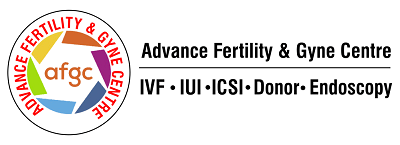A Guide to Male Fertility Supplements: What Really Works?
What Are Male Fertility Supplements?
“Male fertility supplements” are over-the-counter products—usually vitamins, minerals, antioxidants, amino acids, plant extracts, or their blends—marketed to improve semen quality and support conception. Most target oxidative stress (a common contributor to poor sperm motility and DNA damage), while others aim to support mitochondrial energy (for motility), hormonal balance, or membrane integrity (via fatty acids). Evidence is mixed: some ingredients show improvements in semen parameters, while consistent gains in live birth are harder to prove. Current professional guidelines advise cautious, individualized use rather than a one-size-fits-all “fertility pill.”
Benefits of Male Fertility Supplements
Potential benefits fall into three buckets:
- Improve semen parameters
Several randomized trials and meta-analyses report improvements in total/progressive motility, morphology, or concentration with certain agents (e.g., L-carnitine, CoQ10, omega-3s, selenium, zinc). These gains may be most relevant in idiopathic (unexplained) male infertility where no correctable cause is found. - Support embryo-centric outcomes
Some reviews suggest antioxidants may increase clinical pregnancy rates; however, live-birth improvements are inconsistent and often low-certainty. That means supplements can be considered adjuncts, not replacements, for evidence-based treatments (e.g., varicocele repair, IUI/IVF/ICSI when indicated). - Low barrier to try
Most are accessible and generally safe at standard doses. Still, quality varies across brands, and certain doses can interact with medications or cause side effects—so medical guidance matters.
Top Ingredients to Look For in Supplements
L-Carnitine/L-Acetylcarnitine (LC/LAC).
Carnitines shuttle fatty acids into mitochondria, supporting sperm energy and motility. Meta-analyses/RCTs show improvements in motility (often the most treatment-responsive parameter) and, to a lesser extent, morphology. Typical study doses: LC 2–3 g/day (sometimes with LAC 0.5–1 g/day) for ≥3 months.
Coenzyme Q10 (CoQ10).
A mitochondrial cofactor and antioxidant. Trials report better motility and sometimes higher pregnancy rates in idiopathic male infertility after ≥3 months. Doses often 200–300 mg/day.
Omega-3 fatty acids (EPA/DHA).
Integral to sperm membrane fluidity; some studies report improved motility and seminal DHA levels. Typical supplemental doses are ~1–2 g/day combined EPA+DHA.
Selenium and Zinc.
Antioxidant (selenoproteins) and DNA/protein synthesis roles. Data are mixed; some studies show improved motility (selenium) and motility/concentration (zinc), but zinc + folic acid did not improve semen quality or live birth in a large RCT.
Vitamins C and E, NAC, Lycopene.
Classical antioxidants with variable evidence; sometimes included in multi-ingredient formulas.
Ashwagandha (Withania somnifera).
Small clinical studies in oligospermia/stress-related infertility report improved semen parameters and hormonal profiles; larger, high-quality RCTs are still limited.
Reality check: Effects tend to be modest and most consistent for motility. Benefits, when present, generally take one full spermatogenic cycle (≈74 days) to show.
Best Male Fertility Supplements in India
Rather than chasing brand names, use this evidence-based checklist (you can share it with your pharmacist or clinician):
- Single-ingredient or simple blends using doses studied in trials (e.g., LC 2–3 g/day; CoQ10 200–300 mg/day; omega-3 providing ≈1–2 g EPA+DHA; selenium 100–200 µg; zinc 20–40 mg).
- Transparent labels (no “proprietary blends” that hide dosages).
- Third-party testing for purity/heavy metals (USP, Informed-Choice, or equivalent).
- FSSAI-compliant products from reputable manufacturers.
- Avoid megadoses and avoid duplicating the same nutrient across multiple products (e.g., zinc in both a multivitamin and a fertility formula).
- If you have thyroid disease, on anticoagulants, or other conditions, confirm safety with your clinician (e.g., high-dose omega-3 may affect bleeding risk).
Because formulas change frequently and evidence for specific brands is limited, it’s more defensible to choose by ingredient + dose quality than by label hype.
How to Choose the Right Supplement for You
- Start with a medical evaluation.
Rule out and treat correctable causes (varicocele, hypogonadism, ejaculatory duct obstruction, infections, medication effects). Supplements work best as adjuncts after that groundwork. - Match the supplement to your requirement:
- Low motility (asthenozoospermia): LC/LAC, CoQ10, selenium; consider omega-3s.
- Idiopathic subfertility + high oxidative stress/SDF (if tested): targeted antioxidants (CoQ10, vitamins C/E, NAC) under supervision.
- Deficiency states: replace specifically (e.g., zinc if deficient).
- Be cautious with “everything pills.” Many blends underdose key ingredients or include items with weak evidence.
- Commit to 3 months, then recheck semen analysis. If no signal of improvement, stop; don’t accumulate supplements indefinitely.
Natural Ways to Support Male Fertility
- Lifestyle pillars: stop smoking; limit alcohol; maintain a healthy weight; exercise moderately; sleep 7–8 hours; manage stress.
- Heat and toxins: avoid frequent saunas/hot tubs, tight heat exposure (hot laptop on lap), and occupational toxins when possible.
- Diet: emphasize whole foods, fish (omega-3s), nuts, fruits/vegetables (antioxidants), and adequate protein; a food-first approach complements any supplement plan.
- Medication review: discuss anabolic steroids/testosterone, finasteride, or other drugs that may impair spermatogenesis.
- Partner-centric care: coordinate timelines with your partner’s evaluation and, when indicated, assisted reproduction.
Guidelines emphasize that evidence for many lifestyle factors is limited or mixed, but these steps improve general health and are unlikely to harm fertility.
When to Consider Taking Fertility Supplements
- After evaluation confirms idiopathic male factor (no correctable cause) or while awaiting/alongside fertility treatment.
- When motility or morphology are suboptimal and you prefer a low-risk adjunct for a defined trial period (≈3 months).
- When oxidative stress is suspected (e.g., high sperm DNA fragmentation) and your clinician recommends targeted antioxidants.
- Not as a substitute for indicated procedures (e.g., varicocele repair) or ART when time is critical (advanced maternal age, severe factor infertility).
- After Failed IVF cycles – If not started already.
Bottom line: Some supplements (notably LC/LAC, CoQ10, and possibly omega-3s, selenium, zinc) can modestly improve semen parameters in certain men. Evidence for consistent live-birth benefit remains uncertain, and professional guidelines advise cautious counseling. Choose quality products, use appropriate doses, and reassess after 3–6 months.
References (PubMed)
- de Ligny W et al. Antioxidants for male subfertility. Cochrane Review. 2022. (Very low- to low-certainty evidence for improved live birth/clinical pregnancy.) PubMed
- Smits RM et al. Antioxidants for male subfertility. Cochrane Review. 2019. (Earlier synthesis; similar conclusions about low-certainty evidence.) PubMed
- Khaw SC et al. L-carnitine and L-acetylcarnitine supplementation for idiopathic male infertility: systematic review/meta-analysis of RCTs. 2020. (Motility/morphology ↑.) PMC
- Li KP et al. Network meta-analysis of antioxidants in idiopathic male infertility (23 RCTs). 2022. (Carnitine ranked highest for motility/morphology; omega-3 for concentration.) PubMed
- Salvio G et al. Coenzyme Q10 and male infertility: systematic review. 2021. (Improvements in semen quality; variable pregnancy outcomes.) PMC
- Akhigbe TM et al. CoQ10 improves semen quality and hormones in idiopathic male infertility. 2025. (Recent clinical data; calls for larger RCTs.) PubMed
- Hosseini B et al. Omega-3 fatty acids in male infertility: meta-analysis. 2019. (Motility improvement; ↑ DHA in seminal plasma.) PubMed
- Schisterman EF et al. Folic acid + zinc in men: randomized trial. JAMA 2020. (No improvement in semen quality or live birth.) PubMed
- Agarwal A et al. Utility of antioxidants in male infertility: systematic review. 2021. (Semen parameter improvements reported; heterogeneous evidence.) PMC
- Dimitriadis F et al. Antioxidant supplementation and male fertility: systematic review. 2023. (Signals of benefit across several agents; heterogeneity noted.) PubMed
- Garolla A et al. Dietary supplements for male infertility: critical analysis. 2020. (Most products under-dosed or with undemonstrated efficacy.) PubMed
- de Ligny WR et al. Evidence behind OTC antioxidant supplements for male infertility: scoping review. 2023. (Few products tested; trials often low quality.) PubMed
- ASRM/AUA Guideline (updated 2024). Diagnosis and treatment of infertility in men. (Counsel that benefits of supplements are of questionable clinical utility; no specific agent recommended.) AUA Net+1PubMed
- W. somnifera (Ashwagandha) studies in oligospermia/stress-related infertility (pilot and observational). (Suggest parameter improvements; larger RCTs needed.) PubMedPMC
This article is informational and does not substitute for personalized medical advice. Always review supplement plans with your doctor, especially if you’re on other medications or have chronic conditions.

